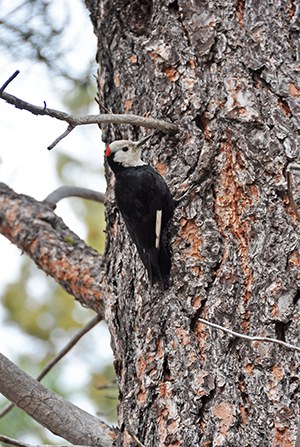The ponderosa pine is a tree commonly found throughout Oregon and on many of the Land Trust’s Community Preserves. How much do you know about this majestic pine with its cinnamon-colored bark? Here are some facts that might be of interest. (Or will at the very least come in handy during your next trivia game!)
Name: Ponderosa pine. It is also known as western yellow pine, yellow pine, bull pine, and blackjack pine.
Description: The ponderosa pine is a long-lived species found in abundance throughout the western U.S. It can range from 55-90’ tall and can live up to 400 years. Needles are found in clusters of three—called fascicles—and are typically 4-6 inches long. Ponderosa pines will keep their needles for several years. They will drop some of their old needles during the fall months. Ponderosa pine bark is dark brown to nearly black when young and then turns into a cinnamon brown to orange-yellow tone at about 90 years of age. This tree quickly develops a deep tap root which helps it to survive extended drought periods, especially long, dry summers like we have in Central Oregon. It is also well adapted to growing on bare rock with its roots following crevices or cracks in the rock.
Winter survival strategies: Winter conditions make finding sources of liquid water and transporting water a challenge. Water loss is minimized in several ways. Water can be obtained from the ground, within the tree, or under the snow. Conifers also have special cell adaptations that facilitate water transport whenever temperatures allow it. Retaining needles allows ponderosa pines to extend the length of the photosynthetic season. It also potentially allows trees to take advantage of winter thaws and, perhaps, even to permit slow rates of photosynthesis during cold weather.
Traditional uses: Ponderosa pine was employed medicinally by several North American indigenous tribes, who valued it especially for its antiseptic properties, using it to treat a range of skin problems, cuts, wounds, burns, etc. It was also valued for its beneficial effect upon the respiratory system and was used to treat various chest and lung complaints. The turpentine obtained from the resin of all pine trees is antiseptic. The inner bark of the ponderosa pine can be eaten raw or cooked and the seed, which is rich in oil, can be ground up to make a flour used in bread-making.
Learn more:


